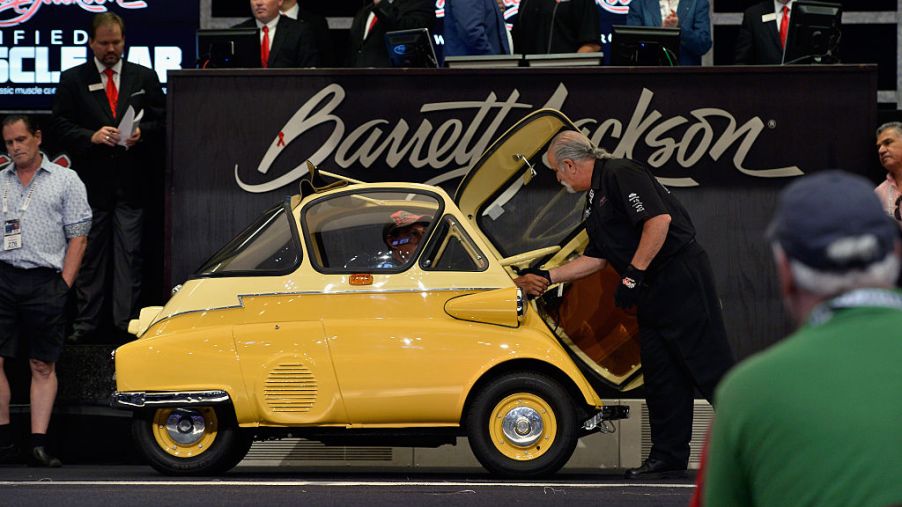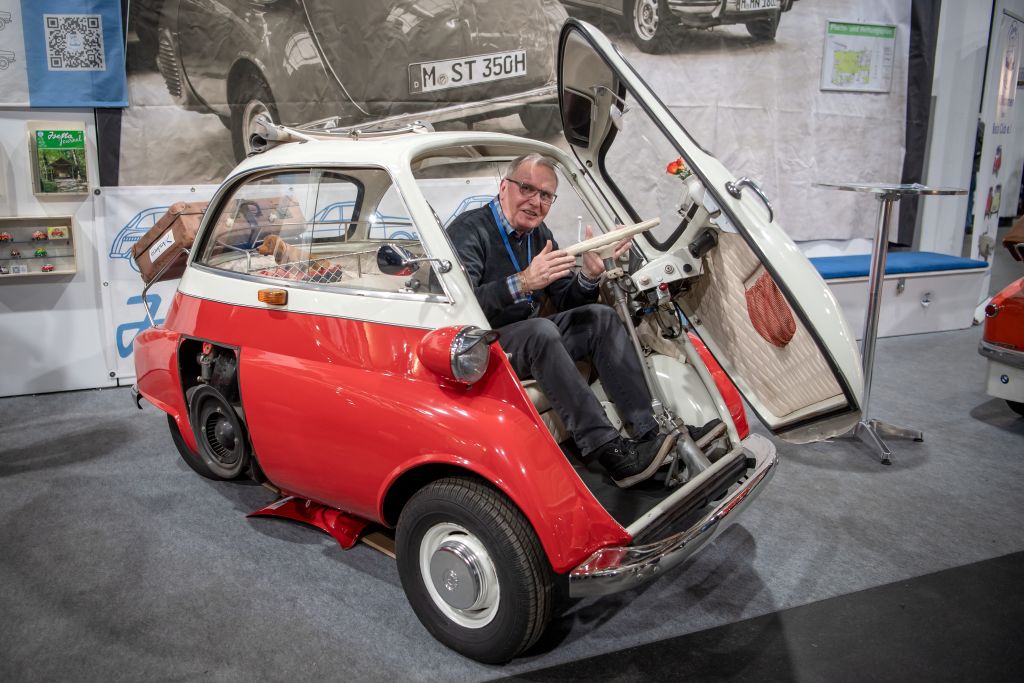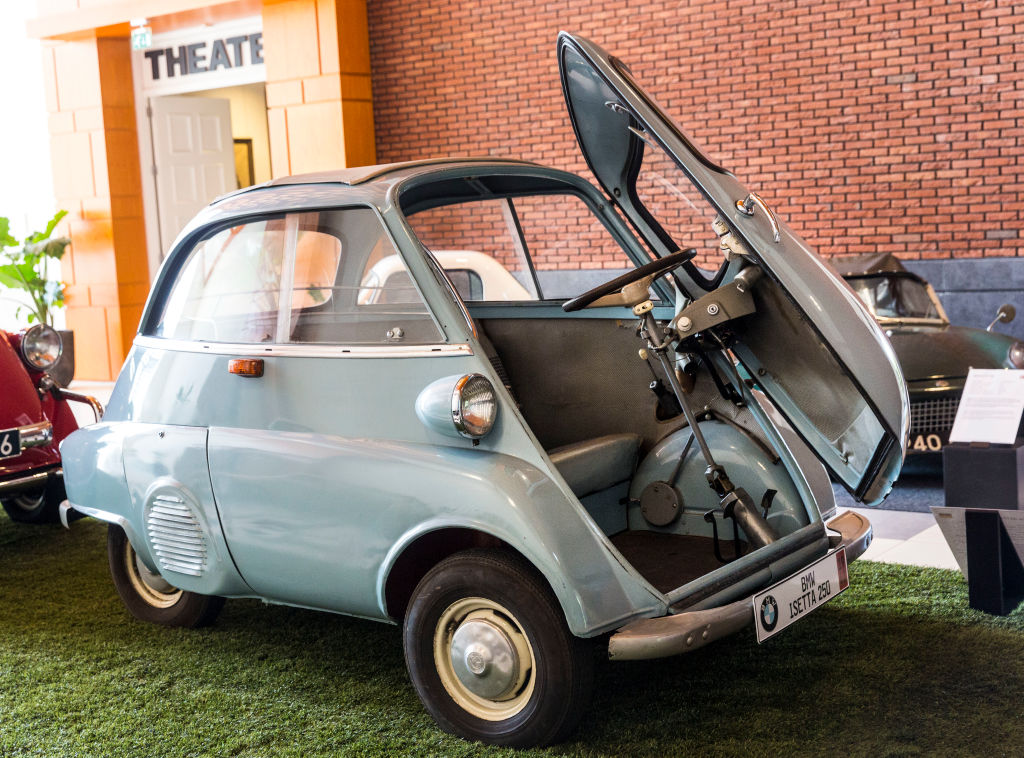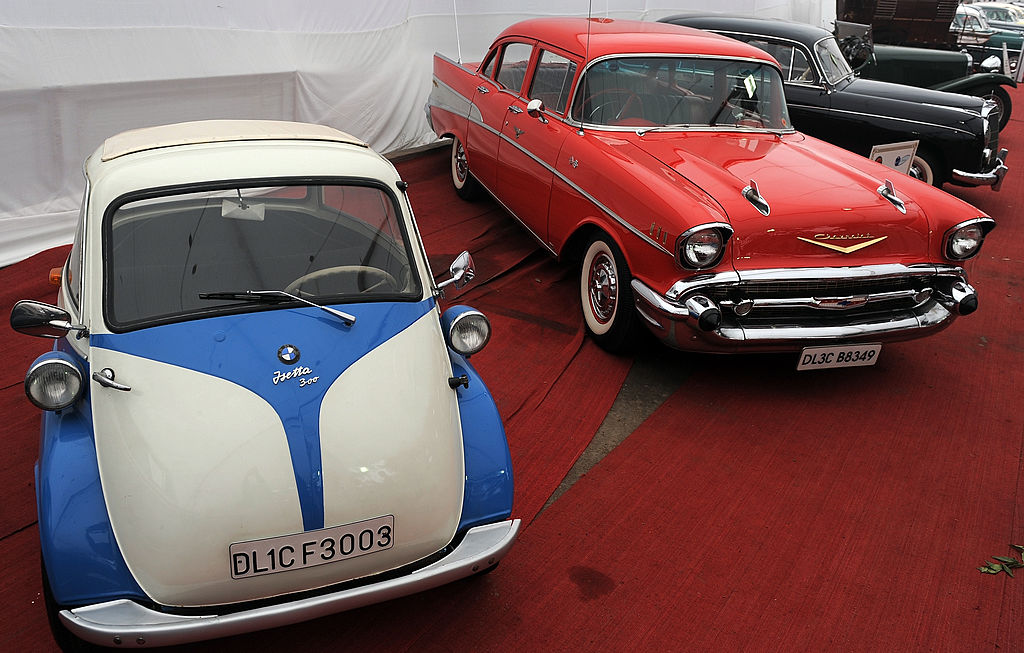
This BMW Isetta Looks Like a Children’s Toy Car
Over decades of design and production, BMW has become well known for its luxury sports cars, sedans and SUVs. They have, on occasion, given us a car that is so bizarre and unlike anything we would be expecting from them. The BMW Isetta is one of those cars.

A small, toylike design
The BMW Isetta is a small, toy-looking car that almost seems like something drawn by a child. In fact, the car’s design is so unconventional it appears to share more characteristics with a children’s electric toy car than any real car you would see on the road today.
The Isetta is classified as a ‘bubble car’ and is shaped like a moderately mishappened egg. The door to enter the car is actually located at the very front, and it opens up to the side to expose a small seating area for the driver, and perhaps one small passenger. On either side of the door are two headlamps, awkwardly mounted about halfway up the body of the car. The taillights are mounted as normally as the car permits, but the reverse lights are located separately from the taillight. In fact, the reverse lights are pretty far from the taillight location all together: they are mounted underneath the bumper.

Power and Handling
The BMW Isetta doesn’t offer a lot of power, but we don’t mind. Considering the car has not front-end to protect drivers in case of collision and the car could be easily squashed by two normal-sized sedans, the sub-30hp provided by the 1 cylinder motor feels like the right choice.
The Isetta has a rather odd 4-speed manual transmission power train set-up. The gearbox is mated to a rubber cardan joint, called a U-joint. The cardan shaft was sandwiched between this U-joint and another before reaching the entrance of the chaincase. The system is about as complicated as it sounds but managed to work effectively and provide a relatively good amount of soundproofing.
The car handles exactly how you expect it would from looking at it. While it may not be evident in pictures, the BMW Isetta does in fact have 2 rear wheels – though they are so close together that it often appears that the car only has three wheels. The awkward suspension and weird arrangement of wheels don’t do the car any favours, and you are going to feel every bump and crack in the road. Driving this car may feel almost like you are driving a small death trap.

Later Years
As BMW continued production of the Isetta, the eventually decided to release the Isetta 600. The Isetta 600 still offered very little power and space but was extended to provide for two tiny back seats. The wheelbase was stretched to accommodate for the back seats, and BMW introduced the semi-trailing arm suspension which would be used for all remaining models of Isetta. The addition of back seats and more heavy suspension parts increased the overall weight of the Isetta 600, so while it was just as slow as the previous two-seater models, it at least compensated for the weight by changing to a 582 cc twin engine that topped out at a max speed of 64mph.


